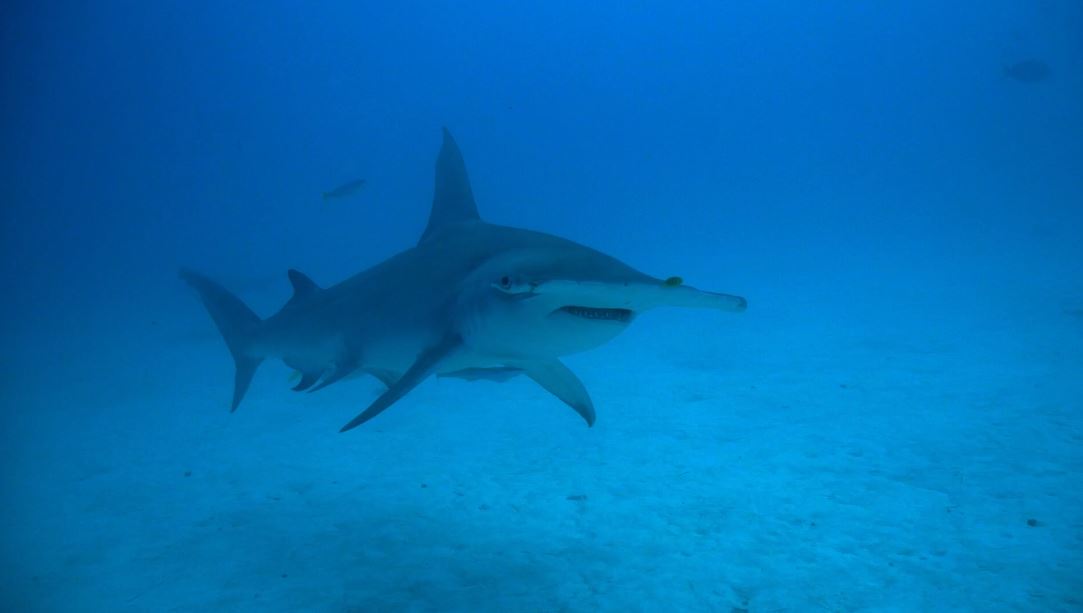Action
Diving During the Maldivian Monsoons
By: Harvey Edwards
Maldives Promotion House – The seasons in the Maldives are dictated by wind direction. While we call them monsoons, to many people that also has connotations of rain and storms.
The Maldives has two main wind directions or ‘monsoons’. The Iruvai Monsoon comes from the NE, which is the direction of the Indian subcontinent and is generally dry and settled, as it passes over a large land area, and relatively small water. The Iruvai is said to start on December 10th, and runs for approximately 4 months until April 7th.
From mid-April the wind tends to come from the SW, picking up a lot of moisture as it moves over the Indian Ocean. Known as the Hulhangu monsoon, this monsoon actually started in India. As the air starts to warm up over the Indian sub-continent (North-hemisphere summer), the air mass rises sharply and there is a rush of wind to replace it, and as it is coming from the SW (moisture-laden ocean) it brings in the rain. Winds in the Maldives are generally at their strongest in May and the rain begins to fall. The Hulhangu monsoon is known as the wet monsoon because of this. This monsoon runs for approximately 6 months.
We must also take into account the changeover period between the monsoons. The wind can change frequently during this time. Just like an ‘Indian summer’ in other countries, these weather patterns change from year to year, but are fairly consistent in the long run. Four months for the Iruvai, six months for the Hulhangu and two months for the changeover period.
The Maldivian Nakaiy Calendar
| Approximate Date | Nakaiy | Approximate Description |
| Dec. 10 – Dec. 22 | MULA | strong winds, rough seas |
| Dec. 23 – Jan. 05 | FURAHALHA | strong north-easterly winds, rough seas |
| Jan. 06 – Jan. 18 | UTHURAHALHA | clear blue skies, strong winds, rough seas |
| Jan. 19 – Jan. 31 | HUVAN | calm seas, blue skies |
| Feb. 01 – Feb. 13 | DHINASHA | north-easterly winds, moderate seas, plenty of sunshine |
| Feb. 14 – Feb. 26 | HIYAVIHA | seas are calm, days and and nights are hot |
| Feb. 27 – Mar. 11 | FURABADHURUVA | frequent, short, sharp bursts of thunder and lightning |
| Mar. 12 – Mar. 25 | FUSBADHURUVA | usually clear blue skies |
| Mar. 26 – Apr. 07 | REYVA | if storm occur they may be severe |
| Apr. 08 – Apr. 21 | ASSIDHA | begins with storm, then becomes hot and dry |
| Apr. 22 – May 05 | BURUNU | begins with a storm and strong winds, then becomes calm |
| May 06 – May 19 | KETHI | dark clouds, frequent rains |
| May 20 – Jun. 02 | ROANU | storms, strong winds and rough seas |
| Jun. 03 – Jun. 16 | MIYAHELIA | storms, rough seas and strong westerly winds |
| Jun. 17 – Jun. 30 | ADHA | south-westerly winds and light rain |
| Jul. 01 – Jul. 14 | FUNOAS | storms, rough seas, frequent sudden gales |
| Jul. 15 – Jul. 28 | FUS | wet and overcast |
| Jul. 29 – Aug. 10 | AHULIA | less frequent storms, calmer days |
| Aug. 11 – Aug. 23 | MAA | generally calm |
| Aug. 24 – Sep. 06 | FURA | isolated showers, usually dry with light north-westerly winds |
| Sep. 07 – Sep. 20 | UTHURA | strong north-westerly winds |
| Sep. 21 – Oct. 03 | ATHA | generally clear and calm with isolated showers |
| Oct. 04 – Oct. 17 | HITHA | light winds, isolated showers |
| Oct. 18 – Oct. 30 | HEY | strong winds from all directions |
| Nov. 01 – Nov. 13 | VIHA | calm days |
| Nov. 14 – Nov. 26 | NORA | light winds, some sun and showers |
| Nov. 27 – Dec. 09 | DOSHA | light north-easterly winds |
Climate
Take this all with a grain of sand. Large weather patterns affecting the Bay of Bengal for example will have a diluted effect in the Maldives. We are generally considered to be out of the cyclone belt but there have been some nifty storms with cyclones damaging islands forcing evacuations as the islands basically disintegrated due to the persistent pounding of waves in a different direction from normal.
Diving/Staying During the Monsoon
To understand this is to understand the geography of the individual atolls. Have a look at your hotel in regards to East/West.
The Maldives is the lowest country in the world; we’re basically sand banks with a few trees. The outer reef is a barrier reef which does a lot to protect the inner reefs from being smashed to pieces. The coral is usually stunted in the shallows as it gets incredibly strong surge and periodic pounding from waves. Ocean swells of 3 to 5 metres are not uncommon. The surge often gouges out huge grooves in the reef making it look a bit like a tin roof.
If the prevailing wind is coming from the south-west, and your resort is on the south-western side of the atoll you’ll experience the worst of it, or best of it depending on what you want. Villas located over the water can actually shudder when the wind and waves are strong. So it may pay to try to get a room on the eastern side of the island, but then you give up the sunset view. Storms are not common.
For diving this is not necessarily a bad thing. While the weather can be arse, and the winds strong, the wind is also creating the current to a certain extent. While it’s impossible to dive the outside channels when the wind is very strong, the days after can be exhilarating or terrifying to some.
Diving at the western side of the atoll during the SW monsoon you will experience predominantly incoming currents. This means the water is rising from the deep ocean and flowing into the shallow atoll. Viz is generally better, water slightly cooler with better chances to see pelagic. Viz can be 50 metres on a sunny calm day with a good incoming current.
Attention: Can you imagine if it gets worse with 3 to 5 metre swells? Seriously? When good dives go bad here, they can go very very bad, very very quickly. A diver can carry 5 different coloured SMBs, air horns, and mirrors, but if you get pushed outside the atoll in to the ocean when the conditions are like that, you will potentially die simply because the traditional Dhonis (boats) are not stable enough to pick you up. Dhonis are actually very good for the local conditions but most ‘tourist’ Dhonis have a huge wooden sun deck making them very top-heavy. The boat will roll if it attempts to pick you up. Please don’t kid yourself about your abilities to handle yourselves when things go wrong. The ocean is like any dramatic outdoor environment such as a desert, mountain, jungle etc. and conditions change. But these kinds of situations are exceptionally rare and dive centres in Maldives will avoid diving in such situations.
Diving at the eastern side of the atoll at this time you will experience predominantly outgoing current. The viz is generally worse, let’s say 12 to 15 metres. Lots of plankton, lots of fish and better chances to see mantas and whale sharks. The currents this time are going from shallow to deep water. When the currents are strong, it tends to drop at the end of the atoll and so caution must be taken here as well. Viz is poorer, you’re lower on air/deco at the end of the dive, a bad time to start equalising your ears.
Resort/Liveaboard
I have never worked on a liveaboard or safari boat. Resorts are varied in price and service. It all depends on your wants vs. your $$$. The more expensive the resort, the more service you receive in terms of equipment status (assembled/washed), free water, snacks, group size etc.
In a 5* Resort, you will pay approximately USD 100 per dive with rental equipment. Some resorts have Nitrox for free if you are certified. Resorts and diving centres are usually separate entities but they usually match each other in terms of price and service. The DC rents the location from the resort, which rents the location from the island owner. Don’t expect to pay USD 50 per dive if your room costs USD 1000 per night.
The typical schedule is 2 or 3 dives per day. Night dives are usually scheduled once a week but can be arranged depending on whether the DC has their own boats or leases from the island. In this case, the boat crew can be working nights doing supply runs. I suggest tipping boat crew USD 10 each if they change their schedule for you. Three crew per boat is USD 30. Tipping the diving staff is nice but not as important IMO.
5* is not necessarily better for diving. I’ve worked in two 5* and one 4* and dived with another 3*. The best for diving was the 3*, followed by the 4* and surprise, surprise the 5* came last. Many resorts are marketed as spas and retreats and the quality of divers can be a real mixed bag. If you’re on holiday, want to relax and maybe dive an afternoon or 2- that’s great.
If you’re a dedicated diver in a 5* resort it can be tricky as some of the best dives in the Maldives are also the most challenging, not all but some. Some 5* guests complain about having to swim (seriously), but they want the attractions that come with the current. Carrying a reef hook doesn’t mean you don’t have to swim against the current sometimes. So the 5* resort doesn’t go to these spots when the current is strong, sad but true. If you have the money, go private. It’ll cost a bundle but if you can share the costs with other like-minded divers, it’ll be worth it.
For price, you can’t beat the all-inclusive resort. Diving is probably not included, but you’ll save a ton on food and drink costs. The foreign staff will really appreciate any magazines, books etc. Anything really is OK, well maybe not a tatty newspaper, but you get my point. Doesn’t matter which language, most staff speak at least two and know other staff which speaks the language in question. They’ll be stoked and you can save your $$ tips for the Maldivian and especially Bangladeshi crews. Many boat crews are now coming from Bangladesh or Sri Lanka, the captain will be Maldivian. These guys make about USD 150 to 200 per month.
Liveaboards are for the divers who are coming to the Maldives to dive. Price will work out the same as 5* resort based diving, probably cheaper in the long run. You’ll cover more ground and dive more often and if you’re lucky to be diving with like-minded guests, you can pick and choose the sites you’re more interested in. If I was coming on a 10 to 12 day diving vacation holiday, I’d hit the safari boat first and then go to a 4* resort for a few days of R n R afterwards.
Action
A season of discovery at Alila Kothaifaru Maldives
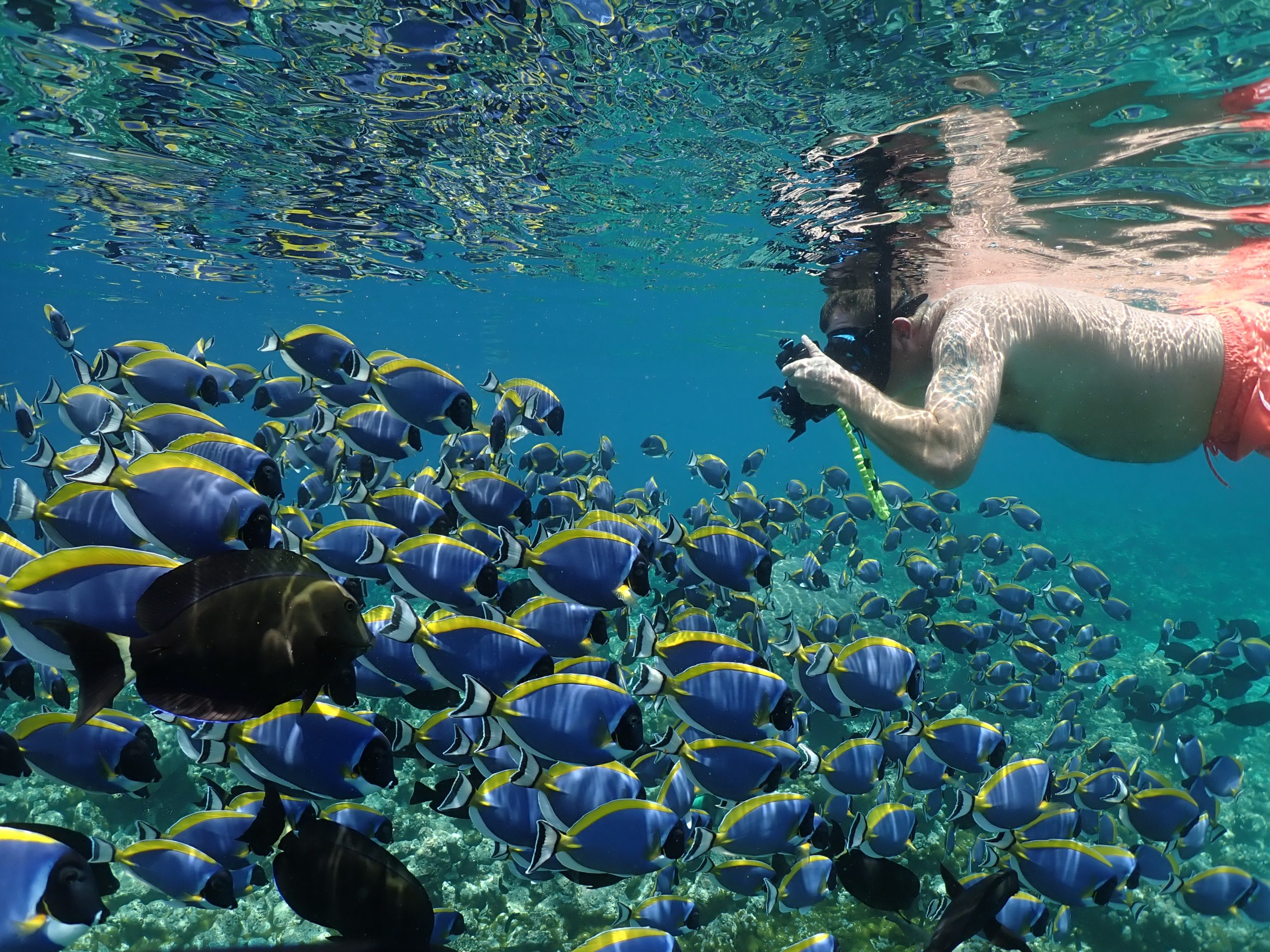
Alila Kothaifaru Maldives continues to offer unforgettable encounters as manta season begins in the Raa Atoll, with recent marine sightings delighting guests and setting an exciting tone for the months ahead. This past week, a large playful group of dolphins cruised very close along the resort’s house reef, while a rare ornate eagle ray was spotted for several days gliding gracefully through the lagoon — remarkable moments that highlight the rich biodiversity surrounding the island.
These encounters are made all the more special by the resort’s commitment to preserving the natural serenity of its marine environment. At Alila Kothaifaru Maldives, sustainability goes beyond words — it shapes every experience offered through the watersports and dive center. By focusing exclusively on non-motorized watersports, the resort helps protect delicate reefs, safeguard marine life, and reduce noise and pollution, ensuring that guests experience the ocean in its purest, most harmonious form.
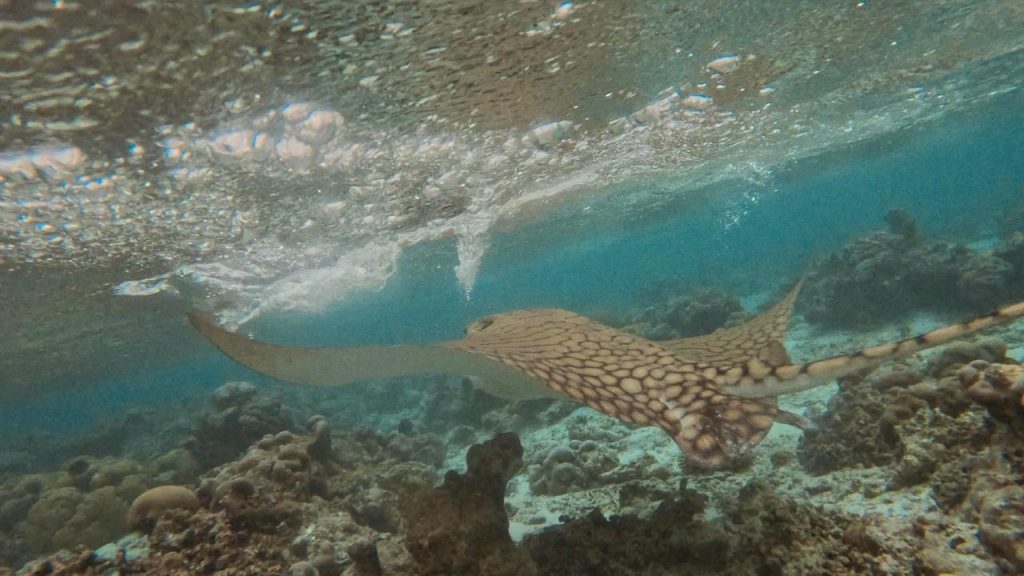
Encounter Majestic Mantas in Raa Atoll
While the resort offers a wide range of aquatic experiences to explore the atoll’s vibrant marine world, now is the ideal time to encounter one of its most majestic creatures – the manta ray. Although mantas can be seen all year round, sightings peak in the Raa Atoll during this season, (December to May) as they migrate in numbers, drawn by plankton-rich waters and multiple cleaning stations.
In the waters surrounding the resort, guests can embark on dive excursions at shallow depths of 10–15 meters, offering remarkable opportunities to see groups of mantas gliding gracefully, as well as observe their social interactions and cleaning behavior. Enriched by the dive team’s insightful storytelling, each experience becomes even more meaningful.
Early morning dives often provide the most rewarding encounters, while beginner and non-divers can enjoy guided private snorkel trips — a peaceful way to witness these gentle giants from the surface.
From kayaking and stand-up paddleboarding to sailing, snorkeling, and diving, every ocean adventure at Alila Kothaifaru Maldives is thoughtfully designed to inspire a deeper connection with the sea while respecting its fragile beauty. This mindful approach ensures that Raa Atoll’s underwater paradise can continue to thrive for generations to come.
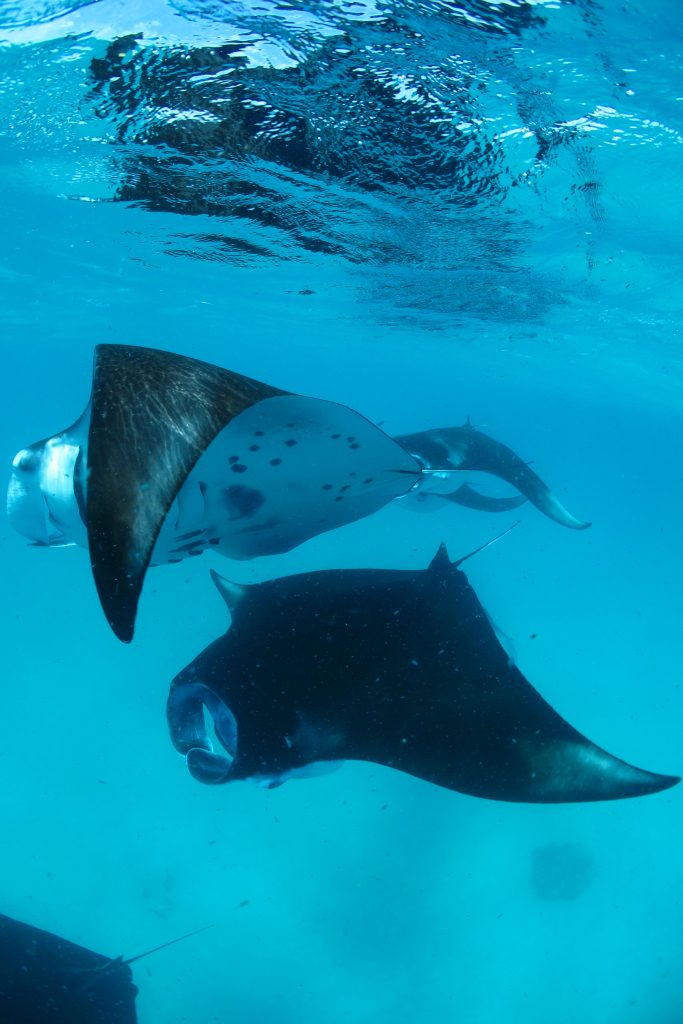
Alila Kothaifaru Maldives Welcomes New Euro-Divers Team
Further enhancing these experiences, Alila Kothaifaru Maldives is delighted to welcome new members to its Euro-Divers team, bringing fresh energy, diverse expertise, and a shared passion for marine conservation to the resort’s in-house dive center.
Hailing from Colombia, Lorena Diaz is an experienced instructor known for her warmth, professionalism, and multilingual skills. Passionate about sharing the underwater world, she has a natural ability to put guests at ease both above and below the surface.
Joining her is Fabio Gerosa from Italy, a certified dive instructor and marine biologist from the University of Bicocca Milano. His scientific background adds depth to every dive, offering guests fascinating insights into marine ecosystems while reinforcing the importance of ocean conservation.
Also part of the team is Yuan, originally from China, who has been diving since 2010 and brings extensive international experience from Egypt, Thailand, the Philippines, Indonesia, Palau, and the Maldives. Having worked with Euro-Divers Maldives since 2017, Yuan loves both pelagic species and tiny ocean creatures, but for her, the true magic of diving lies in the feeling of complete freedom underwater. On land, she enjoys unwinding with a good movie or an engaging story.
Leading the team as Dive Center & Watersports Manager is Igor Semenov, who brings 15 years of experience managing dive centers and watersports operations around the world. A seasoned leader with a wealth of international expertise, Igor is focused on delivering innovative, memorable guest experiences while maintaining the highest standards of safety and environmental responsibility.
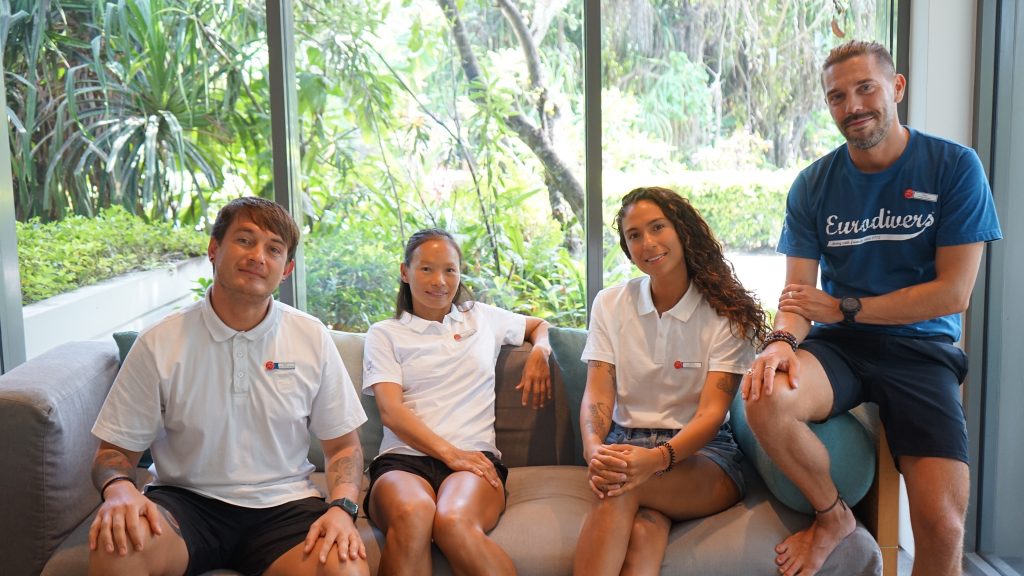
With their blend of international experience, scientific knowledge, and passion for marine conservation, the Euro-Divers team is perfectly placed to guide guests through unforgettable ocean adventures.
New and enriched offerings include enhanced eco-diving programs, guided marine biology sessions, tailored non-motorized watersports activities, and more beginner-friendly snorkel excursions with private guides, making the underwater world accessible to everyone.
Reflecting on what makes operating at Alila Kothaifaru Maldives in Raa Atoll so special, Igor shares, “The pristine reefs, rich biodiversity, and unique manta encounters make it a dream location. Every dive feels like a discovery, and sharing that with guests is incredibly rewarding.”
“Year after year, Alila Kothaifaru Maldives continues to deliver the experiences that make it a standout destination for ocean lovers,” says Thomas Weber, General Manager. “From awe-inspiring marine encounters to the guidance of our exceptional dive team, we are committed to inspiring discovery, adventure, and a lasting appreciation for the world beneath the surface.”
With manta season in full swing and spectacular wildlife sightings unfolding around the island, Alila Kothaifaru Maldives and its Euro-Divers team invite guests to discover the beauty and wonder of the Raa Atoll’s mesmerizing marine world.
Action
Denise Höfer returns to The Nautilus Maldives for four-day padel programme in March 2026

The Nautilus Maldives is set to welcome back Denise Höfer, Germany’s No. 1 padel player and a leading global ambassador of the sport, for a renewed edition of its Masters for Masters series, taking place from 25 to 28 March 2026. This four-day programme invites families, couples and players of every level to discover Padel as a joyful shared adventure, guided by one of the world’s most inspiring Padel athletes.
Padel has grown into a worldwide phenomenon, celebrated for its accessibility and its ability to bring people together. Fast, intuitive and inherently social, it is the perfect sport for parents and children, partners and friends. With its playful nature and quick learning curve, Padel creates rare moments where beginners and seasoned players can genuinely enjoy the game side by side.
In this spirit, The Nautilus presents a Padel Masterclass shaped by connection. Whether learning your first rally with your partner, watching your children gain confidence on the court, or joining a spirited group session with fellow travellers, the programme transforms play into an experience of shared joy and discovery.
Guests will train with Denise Höfer across a curated line up of classes. Tailored, on-demand experiences including Couples Escape, Family Fun, Cardio Padel and Padel × Wellness invite guests to hyper-personalise their journey, blending movement with mindfulness, and performance with light hearted enjoyment. Complimentary daily sessions feature a Group Masterclass and a Children’s Masterclass, each thoughtfully crafted to suit different learning styles and skill levels.
After energising mornings on the court, guests can retreat to Solasta Spa for treatments inspired by natural flow and deep release. Personalised massages, stretching rituals and ocean-influenced therapies provide a gentle counterbalance to the day’s activities, inviting both body and mind to settle into a state of restoration. The experience becomes a soothing rhythm of movement, rest and reconnection, perfectly aligned with the private island’s unhurried philosophy.
With just 26 ultra-luxury houses and residences in the Baa Atoll UNESCO Biosphere Reserve, The Nautilus offers the ideal setting for meaningful time together. Days unfold freely, guided not by schedules but by the simple desire to savour each moment. Whether learning a new skill as a family, sharing a playful match at sunset, or cheering one another from the sidelines, every experience becomes part of a memory shaped by spontaneity and warmth.
The Padel Masterclass with Denise Höfer invites guests to discover more than technique. It offers a chance to bond, to grow and to reconnect with the joy of learning something new together. At The Nautilus, this journey is shaped not by rules, but by the freedom to follow your own rhythm.
Denise Höfer, Germany’s No. 1 Padel Player, shares: “I’m thrilled to be returning to The Nautilus for this special edition of its Masters for Masters series. The Nautilus’s Padel court is truly one of my favourites in the world: it’s incredible setting and stunning lagoon views create an atmosphere unlike anywhere else. I can’t wait to share this unique experience with The Nautilus guests once again.”
Adan Gomez, General Manager of The Nautilus Maldives, adds: “We are delighted to welcome Denise Höfer back to our shores. Having an athlete of her talent and success return to our island is a true honour and offering our guests the rare opportunity to train with her makes this event genuinely exceptional.”
Event Details:
- Dates: 25 to 28 March 2026
- Location: The Nautilus Maldives
To learn more about Denise Höfer and this exclusive experience, please visit the resort’s website. To book your stay, please contact hello@thenautilusmaldives.com
Action
Siyam World achieves snorkelling world record with 307 participants

Siyam World Maldives has officially made global history. On December 5th, the island pulled off one of its boldest ideas yet, becoming the first resort on the planet to earn a Guinness World Records title for The Most People Snorkeling Simultaneously at a Single Venue. In partnership with Freedive Maldives, Siyam World rallied an incredible 307 snorkelers from guests, neighbors, and ocean lovers across the region, diving past the required 250 participant mark and turning the house reef into a spectacular sea of fins and fun. Guinness World Records officials flew in to verify every detail, and for the first time ever in the Maldives, every participant received an official Guinness World Records medal, making “Snorkel World 300” a milestone etched not only in record books but also in everyone’s memories.
The energy of the day embodied everything Siyam World stands for — a big, bold, anything-is-possible playground where imagination meets island life. The event was more than a record attempt; it was a celebration of marine life, community connection, and Siyam World’s adventurous DNA. The event aligned with Sun Siyam Resorts’ ongoing sustainability initiatives, encouraging guests and locals alike to appreciate and protect the natural beauty of the Maldives’ underwater world. It also served as a proud moment for the destination. As the first Guinness World Records medal ceremony ever held in the Maldives, the event spotlighted Maldivian hospitality, creativity, and ocean culture on a global stage.

“What a moment. Being the first resort in the world to set a Guinness World Records title is something we will always carry with pride, not just for Siyam World and Sun Siyam Resorts, but for the Maldives as well. We have never been the type to follow the usual path; doing the unexpected has always been our style. A huge thank you to everyone from the nearby islands who came together to make this possible,” said Ausy Waseem, Resort Manager, Siyam World.

If any resort was going to break a world record, it was always going to be Siyam World. From adrenaline-fueled adventures to quirky island experiences that spark global attention, Siyam World has earned its reputation as the Maldives’ most unrestrained, maximalist playground. This Guinness World Records title adds yet another chapter to its growing list of “only-at-Siyam” moments, proof that the resort is not just a place to stay, but a destination where the extraordinary is the everyday.
Siyam World now stands proudly as a Guinness World Records titleholder, an extraordinary accomplishment shared with the Maldives and the global travel community.
-

 Cooking1 week ago
Cooking1 week agoThe St. Regis Maldives Vommuli Resort welcomes Chef Renzi Gianluca for Tastemaker series collaboration
-

 Entertainment1 week ago
Entertainment1 week agoAward-winning singer Nicole Scherzinger to appear at One&Only Reethi Rah’s New Year’s Eve celebrations
-
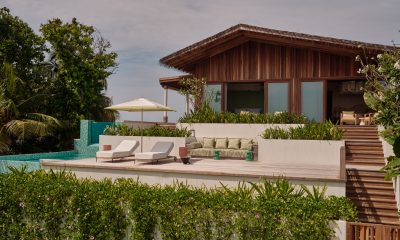
 News1 week ago
News1 week agoSeaside Collection opens .Here, an ultra-private two-island resort in Maldives
-

 Cooking1 week ago
Cooking1 week agoTAPASAKE Maldives marks first anniversary with Luca Cinalli guest mixology night
-
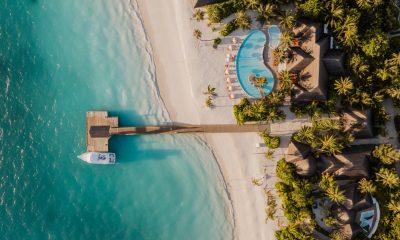
 Awards1 week ago
Awards1 week agoSun Siyam Iru Veli awarded ‘Best Resort’ title at 2025 Bund Design Hotels Awards
-

 Action1 week ago
Action1 week agoDenise Höfer returns to The Nautilus Maldives for four-day padel programme in March 2026
-
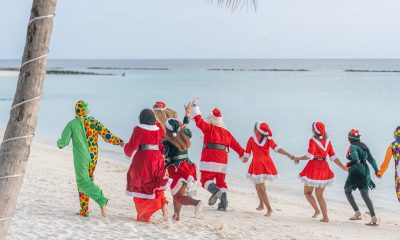
 News7 days ago
News7 days agoCelebrate retro tropicana holiday at SAii Lagoon Maldives
-
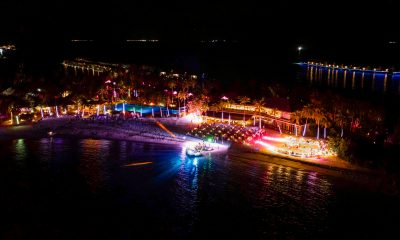
 News7 days ago
News7 days agoHard Rock Hotel Maldives unveils holiday line-up featuring Christmas and New Year gala nights
















